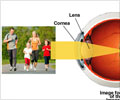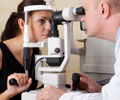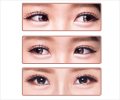
‘The study provides a new understanding of myopia, the most common form of visual impairment worldwide, and opens the way for development of drugs to prevent it.’
Tweet it Now
Myopia is expected to affect nearly half the world's population in the next three decades.
To explore those pathways, the authors induced either myopia or hyperopia in marmosets, by placing lenses in front of their eyes. A lens that shifts the focal point to behind the retina ("hyperopic defocus") induces myopia, while one that shifts it to in front of the retina ("myopic defocus") induces hyperopia. In each case, the eye changes shape, elongating or shortening, to compensate by moving the retina closer to the focal point. When marmosets were exposed to defocus of either type in one eye for up to 5 weeks, the activity of genes in the exposed retina changed compared to the non-exposed retina (used as a control). But the molecular pathways affected were for the most part different between the two types of defocus. While both types of defocus induced changes in important cellular signaling pathways, with the scores of genes affected in each case, only a small handful were affected by both types of defocus.
There were also gene activity differences over time in each type, with little overlap between those affected within the first 10 days and those affected after 5 weeks. Importantly, the authors found that 29 of the genes whose activity changed in response to defocus were localized within chromosomal regions (called quantitative trait loci) previously associated with human myopia in large-scale genetic studies, suggesting that variations in the expression of genes involved in the normal regulation of eye shape in response to defocus contribute to nearsightedness.
"The results of this study show that the retina can distinguish between myopic and hyperopic defocus and responds to defocus of opposite signs by activating largely distinct pathways," Tkatchenko said. "Identification of these pathways provides a framework for the identification of new drug targets and for the development of more effective treatment options for myopia."
Source-Eurekalert














